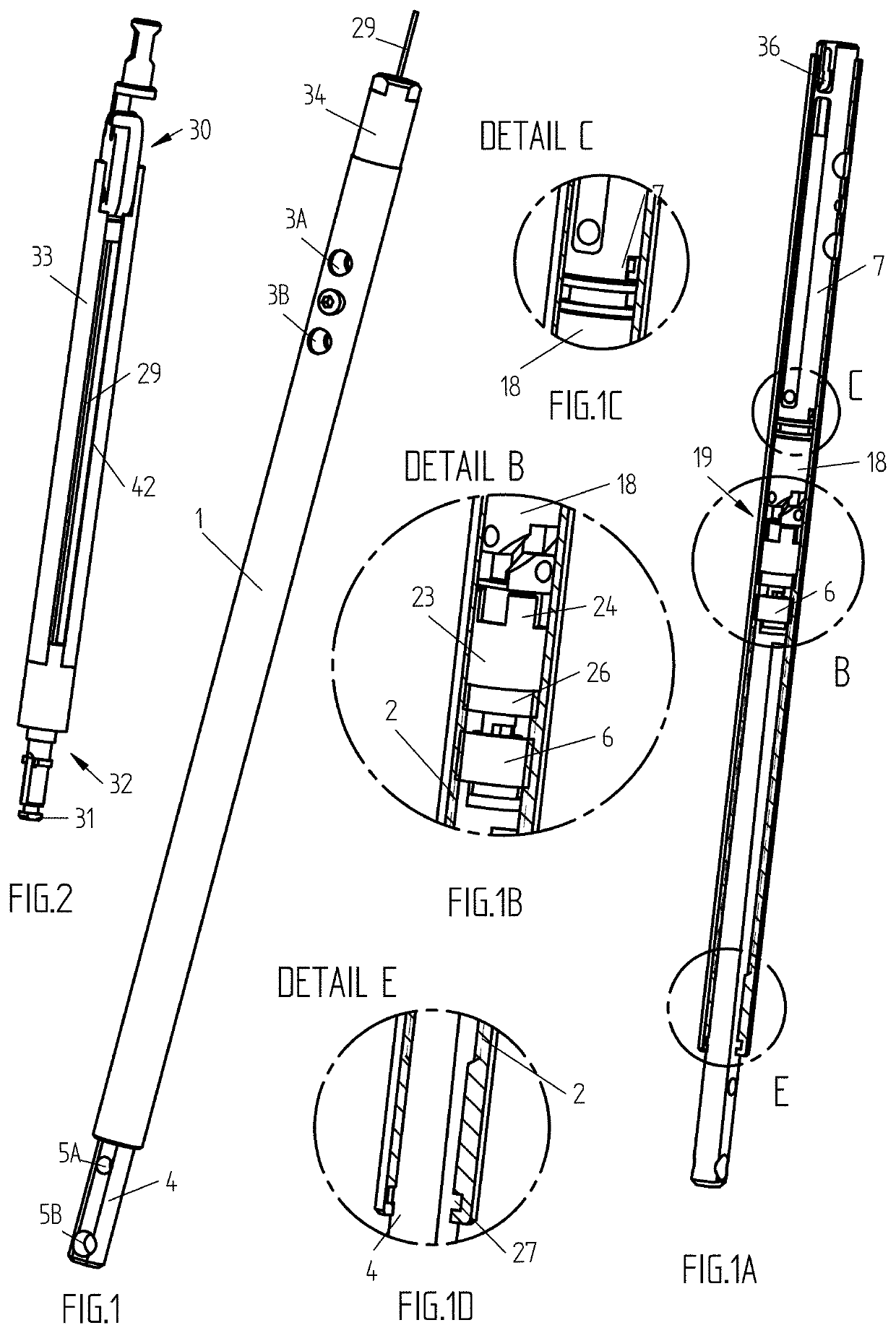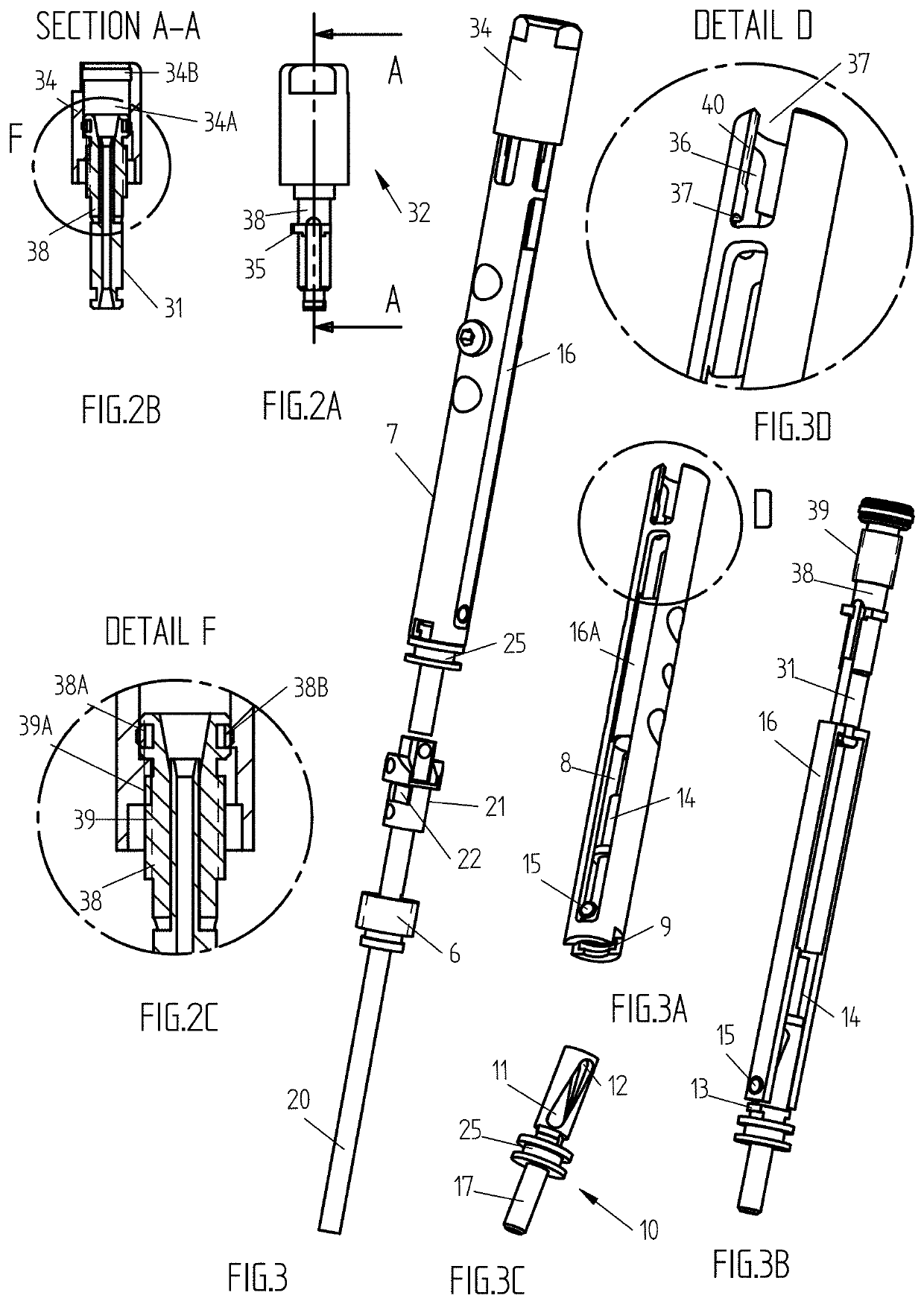Method and implant for bone lengthening
a technology of bone lengthening and implants, applied in the field of orthopedic methods and implants, can solve the problems of increasing the risk of infection and nerve injury, increasing the difficulty of placing the external frame fixation system, and increasing the discomfort of the system, so as to reduce the total lengthening process and improve the everyday life of patients. , the effect of bone lengthening
- Summary
- Abstract
- Description
- Claims
- Application Information
AI Technical Summary
Benefits of technology
Problems solved by technology
Method used
Image
Examples
Embodiment Construction
[0041]According to the invention, the new internal lengthening implant, comprising an intramedullary telescopic nail (FIG. 1, FIG. 1A) consisting of a bushing 1, having a proximal (upper) and a distal (opposite) portions, female thread 2 at the distal portion of the bushing and transverse holes 3A, 3B at the proximal portion; a rod 4 with transverse holes 5A,5B at the distal portion, placed inside of said bushing, whereas the bushing 1 and the rod 4 have means (D-shape connection, for instance) preventing its mutual rotation. A driving nut 6, which interacted with the thread 2, forms together with the bushing SN-pair to drive out said rod 4.
[0042]The inner driving module of this new IMTN (FIG. 1A, FIG. 3, FIG. 3B) consisting of a base-rod 7 (FIG. 1A, FIG. 3A) with a bore 8 and a groove 9, a driving axle 10 (FIG. 3C) having helical 11 and axial 12 cut-outs and lips 13 (FIG. 3C, FIG. 3B) entering said groove, a piston 14 and a compression spring (not shown) pushing said piston 14 insi...
PUM
 Login to View More
Login to View More Abstract
Description
Claims
Application Information
 Login to View More
Login to View More - R&D
- Intellectual Property
- Life Sciences
- Materials
- Tech Scout
- Unparalleled Data Quality
- Higher Quality Content
- 60% Fewer Hallucinations
Browse by: Latest US Patents, China's latest patents, Technical Efficacy Thesaurus, Application Domain, Technology Topic, Popular Technical Reports.
© 2025 PatSnap. All rights reserved.Legal|Privacy policy|Modern Slavery Act Transparency Statement|Sitemap|About US| Contact US: help@patsnap.com



